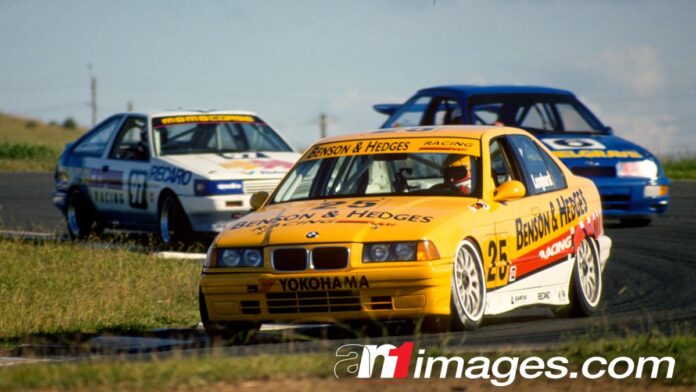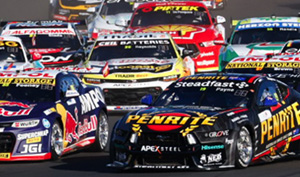COUNTLESS lead changes between four cars, lap after lap of side-by-side action and just two seconds separating the top five cars at the finish.
Based on those stats, the opening race of the 1994 Australian Manufacturers Championship (the forerunner to the Australian Super Touring Championship) had to be one of the greatest races ever, right?
Well, not exactly.
We recently uploaded this landmark race to the V8 Sleuth YouTube channel and, as some viewers pointed out in the comments, it was hardly a proper race!
WATCH: 1994 AMC Round 1 – Eastern Creek, Race 1
Although the two-litre ‘Class 2’ that was soon to be dubbed Super Touring was booming overseas, the Aussie championship had somewhat of a painful birth leading into 1994.
While there was speculation that V8 teams such as Gibson Motorsport (with Nissan Primeras) and Glenn Seton Racing (with Ford Mondeos) would join the series, there were just 10 cars on the grid at the opener.
The only factory backing came from BMW through Logamo Racing, which fielded Tony Longhurst and Paul Morris in a pair of freshly imported, ex-Bigazzi Motorsport E36s.
Joining them were the older E30 BMWs of John Blanchard (an ex-Longhurst 1993 M3 converted to two-litre) and teammates John Cotter and Peter Doulman in cars that previously ran in the two-litre class of the ATCC.
Steven Ellery and Peter Hills fielded Group A Ford Sierras, sans turbochargers, while Phil Ward dusted off one of his Group A 190Es that had not been seen since 1990, now in two-litre rather than 2.3-litre form.
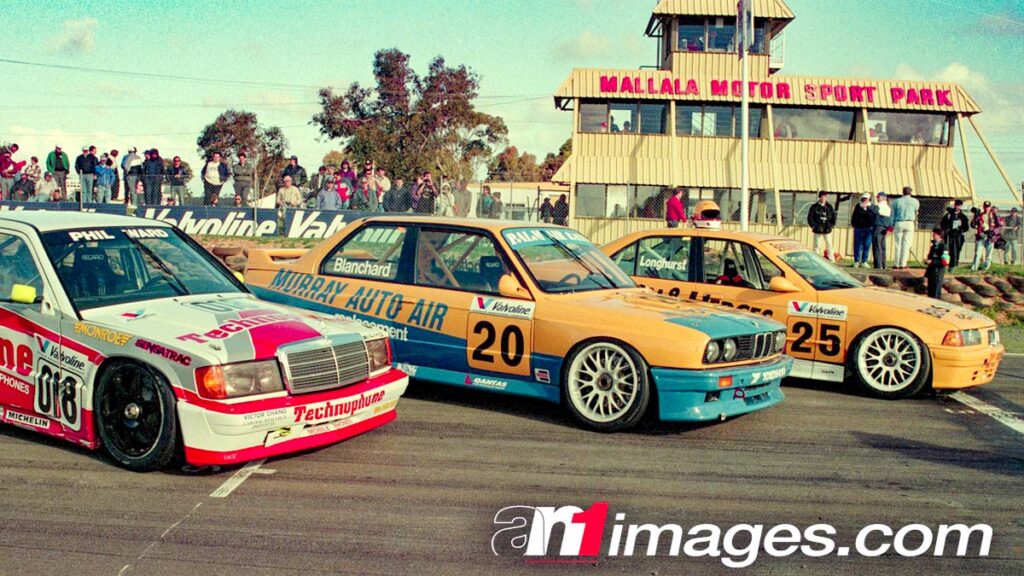
A pair of 1600cc Toyota Corollas fielded by Mark Adderton and Dennis Rogers completed the Eastern Creek starters; the latter ahead of an upgrade to an ex-Bigazzi E30 M3 for Round 2.
Almost five seconds separated the top six cars in qualifying and, as Motorsport News reported at the time, the ‘races’ at the Eastern Creek opener on April 17 were hardly genuine sporting contests.
“Among the informed observers it was considered likely that the factory [BMW] duo would at least make something of it by dicing among themselves,” read Chris Lambden’s MNews report.
“But in fact, they took it a step further, and the “show” actually involved the top six cars.
“It may not have been racing in the purest sense… but the majority of the crowd was entertained by some spirited side-by-side stuff, much passing and re-passing.
“Things were only resolved into something resembling qualifying order as each of the two 15-lappers moved into its closing lap.”
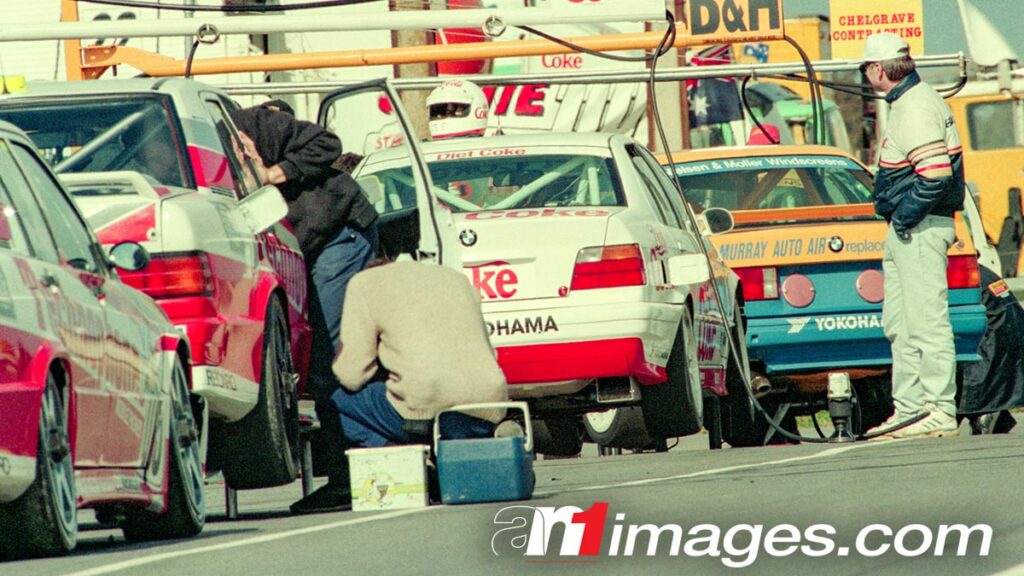
The fact the racing was somewhat staged and the television post-produced didn’t stop legendary commentator Darrell Eastlake from giving it his full treatment for the Nine Network broadcasts though, as the video attests!
For the record, Morris won the first race by 0.52 seconds from Longhurst, while the order was reversed to the tune of 0.48s in Race 2.
The addition of a Toyota Carina for Greg Murphy added another badly needed front-running car for Round 2 at Phillip Island.
The tiny 10-car grid though led to more of the same ‘showbiz’ at the Victorian venue.
Morris and Longhurst again split the wins; Longhurst beat Morris by 0.13s in Race 1 (where the top six were covered by 1.1s!) and Morris led home Blanchard by 0.26s in Race 2.
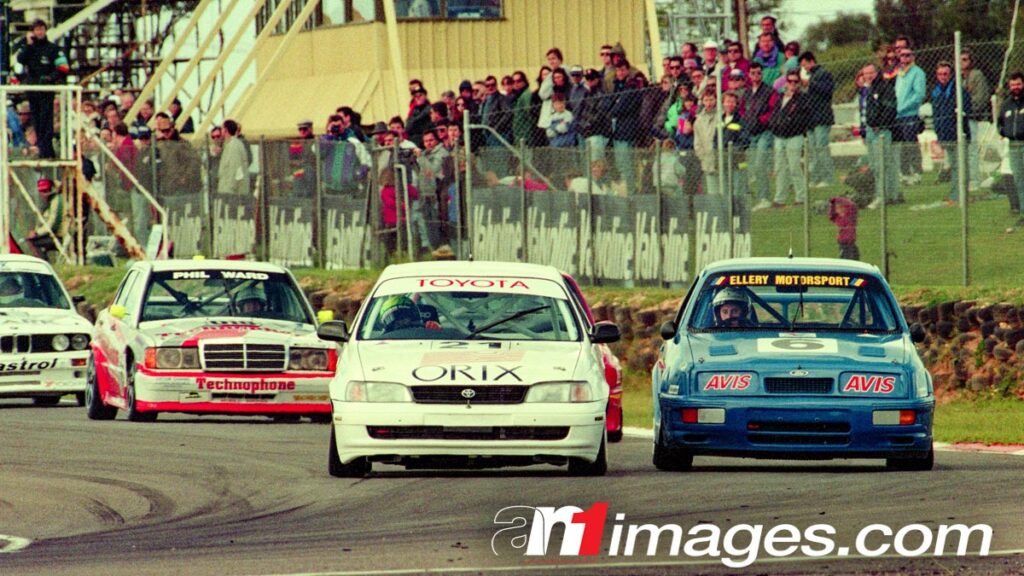
Peter Adderton, the outspoken Boost Mobile boss who was a co-owner of TOCA Australia during the 1990s, says losing cars from the grid during a race weekend was always a major concern.
That was in part due to the 1994 format that featured just a 10-minute break between the two 20-minute races.
“We had eight or nine cars and we were just telling the guys ‘just race the last lap, because I can’t afford to have any of them break’,” he said in a recent Repco Garage video, below.
“It really came down to a two-lap race in the end because we didn’t want to have any problems with the cars.”
WATCH: Murphy and Adderton talk 2-litre, Supercars future and more.
There were 11 cars for Round 3 at Winton, where Brit James Kaye was flown in to take charge of the ex-Roland Dane/Park Lane Carina, which he’d previously raced in the UK.
Although Kaye’s presence was perhaps a sign that the series was about to get serious, nothing could prepare onlookers for what happened next!
Kaye scored pole for Race 1 but lost out at the start to the rear-wheel-drive BMWs on a semi-damp track, and Longhurst eventually won after Morris slid wide in the tricky conditions.
Race 2 yielded Australian two-litre racing’s most infamous moment as the teammates crashed while fighting for the lead, and then Longhurst punched Morris while the latter sat stunned in his car.
WATCH: Longhurst and Morris tangle at Winton
There was nothing staged about that incident, or its consequences, as Longhurst was fined $10,000 and excluded from the results of the meeting.
The two BMW pilots then slugged it out – metaphorically! – for the remainder of the year; the title ultimately going to Longhurst 176 points to 168 despite his Winton woes.
Morris was hampered by mechanical trouble at Lakeside’s Round 4 and Mallala’s Round 5 as Longhurst swept all four races, and a Morris double at the Oran Park finale was not enough to turn the tide.
Perhaps more importantly though car counts had swelled to a relatively healthy 14 by year’s end, setting up an explosion of interest in the class for 1995 and beyond.
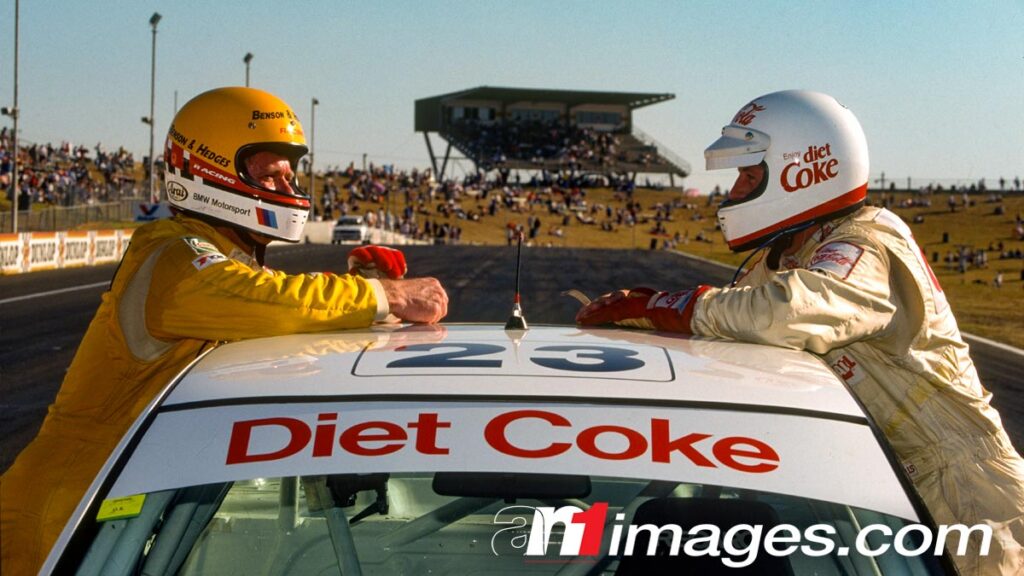
The renamed Australian Super Touring Championship put on some cracking (and genuine!) racing over the years that followed, highlighted by the battles between the factory BMW, Audi and Volvo teams.
But as five-litre touring car racing became V8 Supercars at the end of 1996 and started a major boom period of its own, the two tin-top classes were soon on a collision course that included the infamous ‘battle for Bathurst’.
SHOP: 1997 & 1998 Super Touring Bathurst 1000 Highlights DVD
“We made some missteps towards the end,” reflects Adderton, who co-owned TOCA Australia with BTCC boss Alan Gow and Paul Morris’ father, Terry.
“We could have gotten together with the Touring Car guys, I remember (V8 Supercar boss) Tony Cochrane coming into my boardroom [and] we were so arrogant.
“They wanted to talk about how we could put this together. I was like ‘no, no, no, we’ve got all these manufacturers’; it was all going gangbusters….”
By the late 1990s Super Touring was also on the decline globally as manufacturers were scared away by the skyrocketing costs, and as the decade ended the Aussie series’ last two marques, Audi and Volvo, withdrew.


